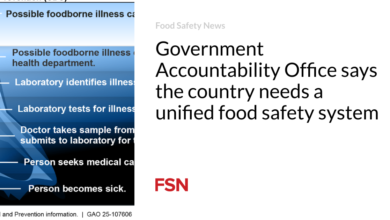You Can Get Free At-Home HIV Tests Every 3 Months Until 2027. Here’s How

If you’ve ever wondered about your HIV status but haven’t gotten the test for whatever reason—time, cost, anxiety—now is your chance to bypass at least some of these concerns.
You can order up to two HIV self-tests for free if you live in the US (including Puerto Rico) and are age 17 or older, thanks to a CDC-funded program called Together TakeMeHome that launched in 2023.
It’s super easy to fill out the form, and once you receive your test in the mail, all you have to do is swab your gums and wait 20 minutes for your results, which you can read in the privacy and comfort of your home. Plus, you can also order another round of tests every three months until 2027.
This program has been a pretty big success so far; the agency mailed about 440,000 tests in the first year, according to a recent CDC report. About 40,000 people who ordered a kit had never been tested for HIV before, and of those, 151 reported testing positive.
HIV is now very treatable (and preventable, if you use PrEP medication and/or condoms) but there are still about 40,000 new HIV infections per year. Nearly 40% of people with the virus don’t know they have it or know but aren’t receiving treatment. (Just note that this self-test will no longer be helpful for you if you are using PrEP because the medicine can affect its ability to detect the virus.)
“Most adults in the US have never been tested for HIV, despite the CDC’s recommendation for everyone ages 13–64 to get tested at least once in their lifetime,” Travis Sanchez, MPH, executive director of the Together TakeMeHome distribution program, tells SELF. This initiative “gives people the power to test on their own terms.”
Here are the most important things to know about these free HIV self-tests.
How long does it take to get a free HIV self-test?
You can expect to receive your tests in the mail within three to five days. You just have to provide your name, birthday, email, and home address. After three months, you can order a new pair of tests—which is a good idea if you had anal or vaginal sex with a new partner or partners or shared drug injection equipment with other people within that period and have not been tested again.
For those younger than age 17, free HIV tests may still be available via community health centers or substance abuse programs; check out this CDC directory to see if organizations in your area are offering free or cheaper tests.
How does the HIV self-test work?
When you are ready to take the test, avoid eating, drinking, or using mouthwash 30 minutes beforehand. Then swipe your upper and lower gums with the swab that comes in your kit and put it into the provided tube. The “test window” will turn pink for a little while, but wait a full 20 minutes before reading your results. (Here’s a video tutorial.)
It works by detecting antibodies your immune system produces when exposed to HIV. It takes time for your body to develop antibodies (anywhere from one to three months) that the test can pick up. So if you get a negative result right after your potential exposure to HIV, the CDC suggests you take another test after the “window period”—so, three months after you were exposed. (If your second test is negative again and you didn’t have another exposure in that time, you likely don’t have HIV.)
If you think you’ve been exposed to HIV recently and you don’t want to wait for results, Sanchez recommends going to a clinic for a blood test because it can detect HIV sooner than self-tests can—anywhere between 10 to 33 days after exposure, according to the CDC.
Can I trust the results and what should I do about them?
The test “is very reliable,” Sanchez says. Studies show that it has a 92% sensitivity, meaning one false negative is expected out of every 12 tests in people who have HIV. It also has 99% specificity, so one false positive is expected out of every 5,000 test results in people who don’t have HIV.
If it’s negative, consider talking to a health care provider about starting PrEP, which lowers your chances of getting HIV from sex or injection drug use. If you test positive, you’ll need to go to a clinic to confirm that result with a blood test. If that one is positive as well, you can start treatment as soon as possible, which for most people involves taking one pill a day.
A positive result can be stressful, but it’s important to give yourself time to process the news and reach out for support whenever you’re ready. And know that there are a ton of resources to help you get through it. You can message the Crisis Text Line at 741741 or visit CrisisTextLine.org for immediate mental health support. If you’re worried about telling partners about your diagnosis, check out these suggestions on how to handle that conversation or visit TellYourPartner.org if you prefer to do it anonymously.
While you can take this test by yourself at home, know that you are not alone while you’re making a huge life transition, experts with Together TakeMeHome say. “Please know that there is support waiting for you.”
Related:
- It’s a Great Time to Get Tested for STIs
- What Causes a Weakened Immune System?
- At-Home STI Tests Are Everywhere Right Now. How Well Do They Work?
Get more of SELF’s great service journalism delivered right to your inbox—for free.



